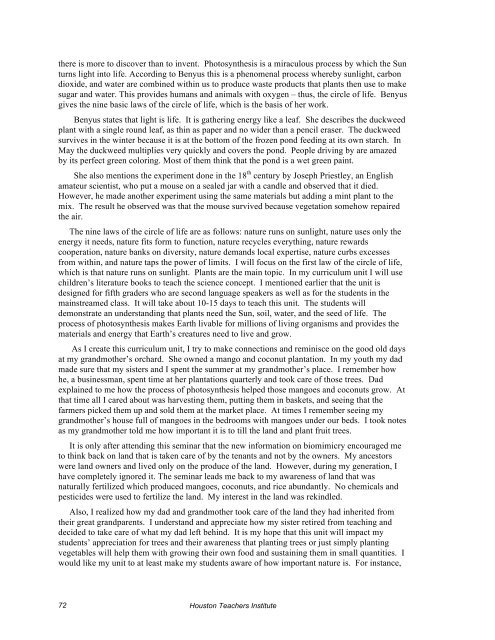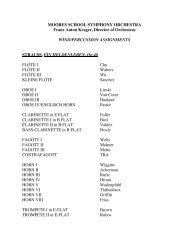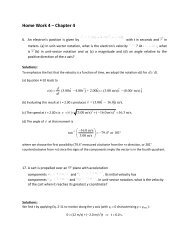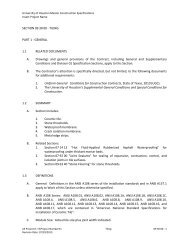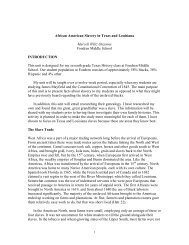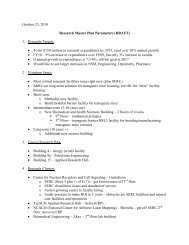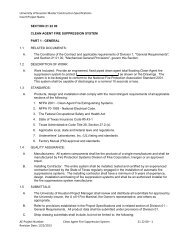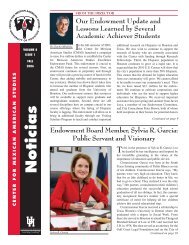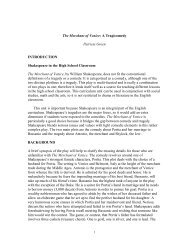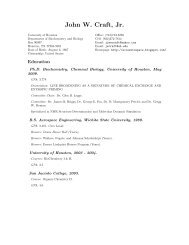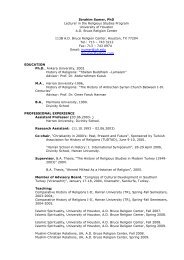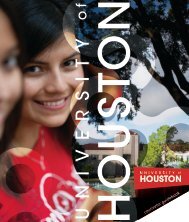Going Green: Biomimicry Francisca Eunice Gomez Rebullida ...
Going Green: Biomimicry Francisca Eunice Gomez Rebullida ...
Going Green: Biomimicry Francisca Eunice Gomez Rebullida ...
Create successful ePaper yourself
Turn your PDF publications into a flip-book with our unique Google optimized e-Paper software.
there is more to discover than to invent. Photosynthesis is a miraculous process by which the Sun<br />
turns light into life. According to Benyus this is a phenomenal process whereby sunlight, carbon<br />
dioxide, and water are combined within us to produce waste products that plants then use to make<br />
sugar and water. This provides humans and animals with oxygen – thus, the circle of life. Benyus<br />
gives the nine basic laws of the circle of life, which is the basis of her work.<br />
Benyus states that light is life. It is gathering energy like a leaf. She describes the duckweed<br />
plant with a single round leaf, as thin as paper and no wider than a pencil eraser. The duckweed<br />
survives in the winter because it is at the bottom of the frozen pond feeding at its own starch. In<br />
May the duckweed multiplies very quickly and covers the pond. People driving by are amazed<br />
by its perfect green coloring. Most of them think that the pond is a wet green paint.<br />
She also mentions the experiment done in the 18 th century by Joseph Priestley, an English<br />
amateur scientist, who put a mouse on a sealed jar with a candle and observed that it died.<br />
However, he made another experiment using the same materials but adding a mint plant to the<br />
mix. The result he observed was that the mouse survived because vegetation somehow repaired<br />
the air.<br />
The nine laws of the circle of life are as follows: nature runs on sunlight, nature uses only the<br />
energy it needs, nature fits form to function, nature recycles everything, nature rewards<br />
cooperation, nature banks on diversity, nature demands local expertise, nature curbs excesses<br />
from within, and nature taps the power of limits. I will focus on the first law of the circle of life,<br />
which is that nature runs on sunlight. Plants are the main topic. In my curriculum unit I will use<br />
children’s literature books to teach the science concept. I mentioned earlier that the unit is<br />
designed for fifth graders who are second language speakers as well as for the students in the<br />
mainstreamed class. It will take about 10-15 days to teach this unit. The students will<br />
demonstrate an understanding that plants need the Sun, soil, water, and the seed of life. The<br />
process of photosynthesis makes Earth livable for millions of living organisms and provides the<br />
materials and energy that Earth’s creatures need to live and grow.<br />
As I create this curriculum unit, I try to make connections and reminisce on the good old days<br />
at my grandmother’s orchard. She owned a mango and coconut plantation. In my youth my dad<br />
made sure that my sisters and I spent the summer at my grandmother’s place. I remember how<br />
he, a businessman, spent time at her plantations quarterly and took care of those trees. Dad<br />
explained to me how the process of photosynthesis helped those mangoes and coconuts grow. At<br />
that time all I cared about was harvesting them, putting them in baskets, and seeing that the<br />
farmers picked them up and sold them at the market place. At times I remember seeing my<br />
grandmother’s house full of mangoes in the bedrooms with mangoes under our beds. I took notes<br />
as my grandmother told me how important it is to till the land and plant fruit trees.<br />
It is only after attending this seminar that the new information on biomimicry encouraged me<br />
to think back on land that is taken care of by the tenants and not by the owners. My ancestors<br />
were land owners and lived only on the produce of the land. However, during my generation, I<br />
have completely ignored it. The seminar leads me back to my awareness of land that was<br />
naturally fertilized which produced mangoes, coconuts, and rice abundantly. No chemicals and<br />
pesticides were used to fertilize the land. My interest in the land was rekindled.<br />
Also, I realized how my dad and grandmother took care of the land they had inherited from<br />
their great grandparents. I understand and appreciate how my sister retired from teaching and<br />
decided to take care of what my dad left behind. It is my hope that this unit will impact my<br />
students’ appreciation for trees and their awareness that planting trees or just simply planting<br />
vegetables will help them with growing their own food and sustaining them in small quantities. I<br />
would like my unit to at least make my students aware of how important nature is. For instance,<br />
72<br />
Houston Teachers Institute


